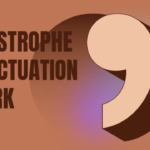Definition
The apostrophe is a punctuation mark that has many purposes. It can be used to indicate possession, to show contractions, and to form plurals of certain words. However, it can also be misused very easily. In this blog post, we will discuss when to use the apostrophe and when to avoid it. We will also provide some tips on how to use it correctly!
Lastly, the apostrophe is often used in place names to show that the name is possessive. For example, London’s mayor or Iowa’s state
Purpose of Apostrophe
The apostrophe has many purposes, but the most common ones are to indicate possession, contractions, and plurals. It is important to know when to use the apostrophe and when to avoid it in order to prevent from making mistakes!
How to use apostrophe:
Rules for Possession
The apostrophe is used to indicate possession. For example, the cat’s toys belong to the cat. To show that something belongs to person or thing, use an apostrophe followed by “s”.
For example, the cats’ toys belong to the cats.
For singular nouns we use apostrophe and then add s
Car’s windows
Baby’s feeder
Dog’s house
Dogs’ houses
Cars’ windows
Cars’ toys
But when plural nouns that don’t end with s we use apostrophe and add s to them
Children’s bags
Men’s fashion
Rules for Contractions
The apostrophe is used in contractions to replace missing letters. A contraction is a shortened form of a word (or group of words) that omits letters or sounds. A missing letter is represented by an Apostrophe in a contraction. The most common contractions are formed by attaching verbs, auxiliaries, or modals to other words.
For example
Let’s. – let us
I’m – I am
You’re – you are
You’ll – you will
She’d – she had / she would
He’s – he is
A single apostrophe appears to indicate joint possession.
Put the apostrophe plus s after the second name only if two people have the same item.
Examples:
John and Denial’s house (same house)
Ricky and Martin’s trip (same trip)
George and Isla’s convocation (same convocation)
Apostrophes for each possessor denote individual possession.
Use the possessive form for both if the possession is separate rather than joint.
Examples:
John’s and Denial’s houses ( different houses)
Ricky’s and Martin’s trips ( separate trips)
George’s and Isla’s convocations ( separate convocations)
When not to use apostrophe:
Now that we’ve gone over the basics of when to use an apostrophe, let’s take a look at some common mistakes.
One mistake is to add an apostrophe when forming plurals of words that end with “s”.
For example
The plural of “bus” is “buses”, not “bus’s”.
Another mistake is to leave out the apostrophe when indicating possession. For example, the correct way to say “the cat’s toys” is with the apostrophe, not without it.





1 thought on “APOSTROPHE PUNCTUATION MARK”